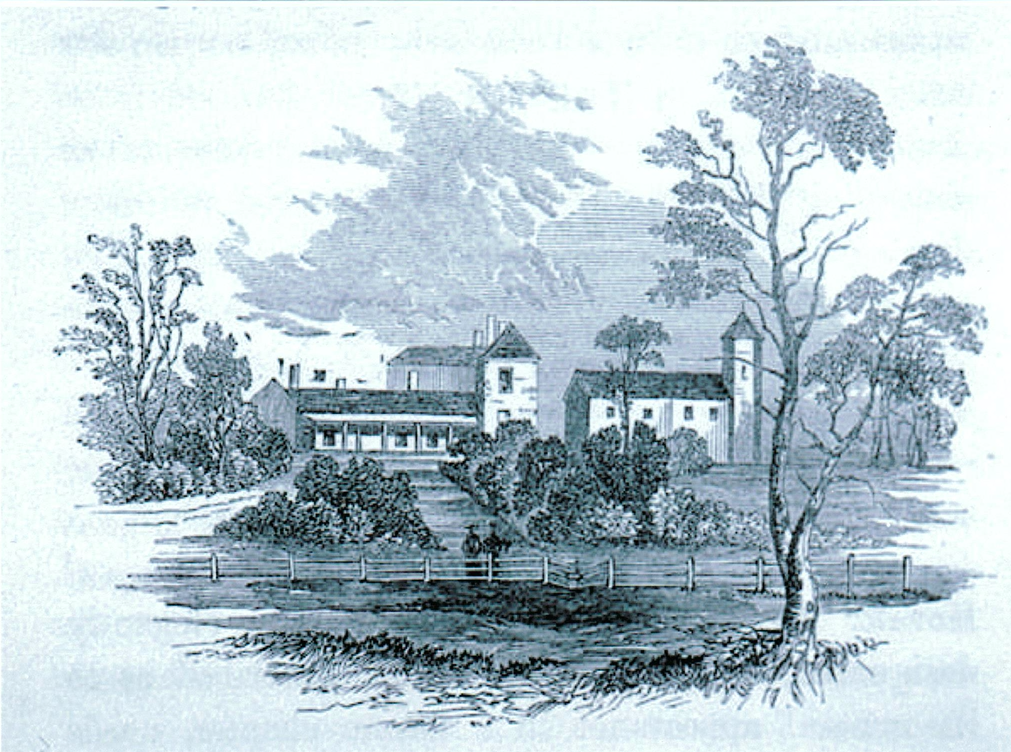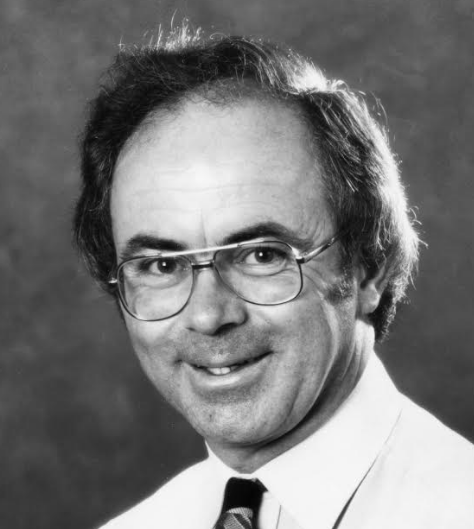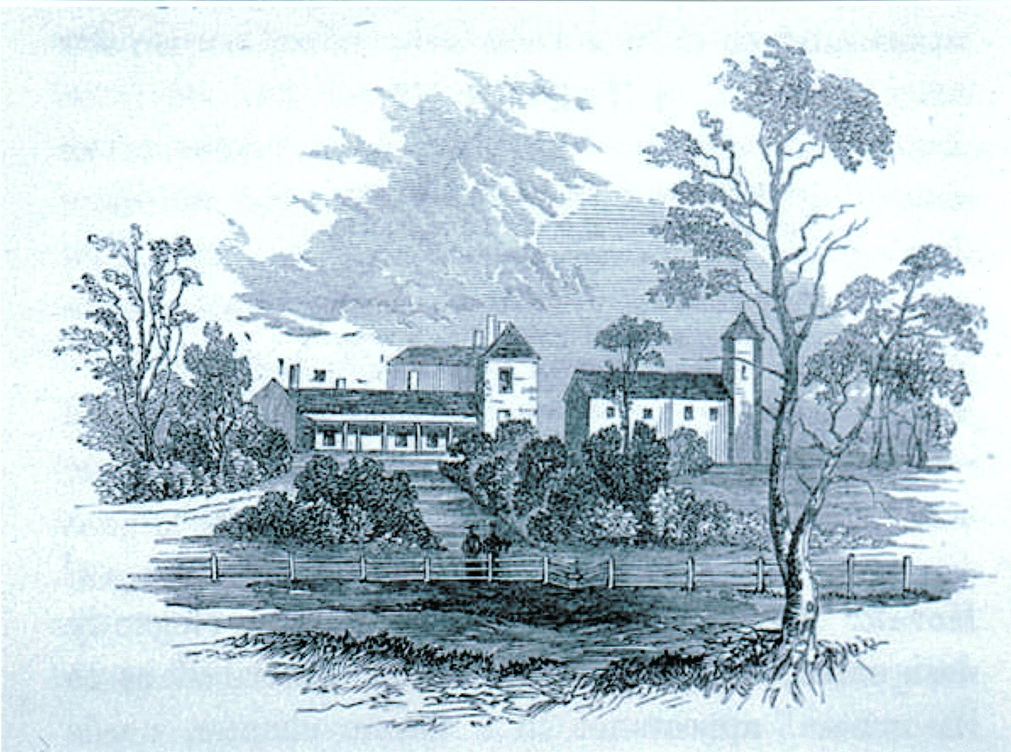
When Christ’s College at Bishopsbourne was advertised for opening on Thursday, 1 October, 1846, those planning to attend were cautioned “the only good road was by way of Longford over the punt, as the approaches to the bridge on both sides were not passable for vehicles and it was advisable to carry a pistol, as bushrangers were about and murders had occurred in the vicinity”.
The College opening was the culmination of a number of years of effort in getting the complex up and running. As far back as 1833 Governor Arthur had been keen on a college project although his preferred locality was at New Norfolk, but action had not gone beyond the proposal stage. With the coming of a new Governor, Sir John Franklin, he brought an instant zeal to the project. The plan envisaged was for the college to correspond as nearly as possible to a college in the Universities of Oxford and Cambridge in England. After a lot of effort and difficulty the necessary funds were raised and the services of a warden obtained, that of the Rev. J. Phillip Gell, from Trinity College Cambridge.
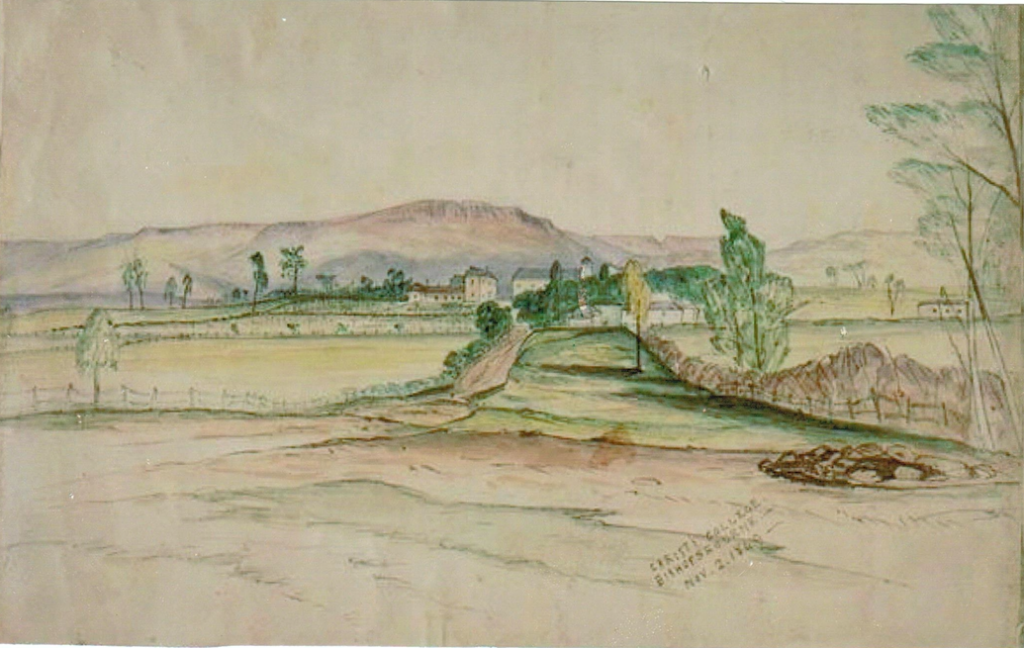
The property purchased was part of the “Vron” property which had been granted to William Guillyer Walker when he arrived in 1825. In the next year he set about building his double storied residence, completing it by 1829. The section purchased by the Church of England consisted initially of 1,218 acres and the “Vron Mansion”, with cost being £5,000, although this was later added too with the erection of more buildings and the purchase of a further 3,400 acres at a cost of 10 shillings an acre.
The initial purchase was made in 1845 with the church authorities marking out the township area and giving it the name of Bishopsbourne. At the same time “Vron Mansion” was renamed “Episcopal House”. Bishopsbourne was declared a town on 3 July, 1866.
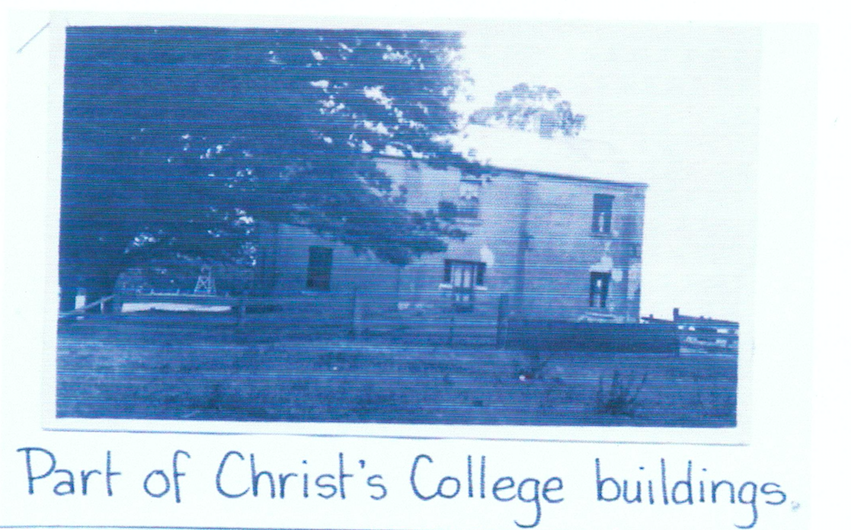
On the College opening day numerous people attended from throughout the Colony with Bishop Nixon declaring to those present that the intention of the institution was “to be a stronghold of learning and a school for Christsian gentlemen”. On the same day Nixon also laid the foundation stone for the extensions, a second double storied residence having the same tall gables with a small octagonal tower at one end. Also surrounding the complex was a brick coach house and stables amongst other buildings.
Over the 11 years of its operation a college of excellence was established with many of those attending going on to occupy high places in the States history. The end of year prize list of 1855 recorded 42 students in residence and included the names of Pedder, Davies, Arthur, Mason, Dumaresq, Bedford, Gates, Denison, and Pitcairn all of whom became notable. Three students trained at the College became Archdeacons – they were the Ven. Peter Righton Atkinson of Surrey, England, the Ven. Peter Parry Fogg of Natal, South Africa and the Ven. Alfred Nathaniel Mason of Hobart. Chief Justice, Sir William Lambert Dobson, K.C.M.G. was also trained at Bishopsbourne as was the church historian, Ernest Whitfeld.
The College closed in 1857 due to a lack of finance, a difficulty being to find enough suitable students to make it viable. After a lapse of 22 years the college was re-established at the University of Tasmania, Hobart under its original name, Christ’s College where today it continues as a students residential college.
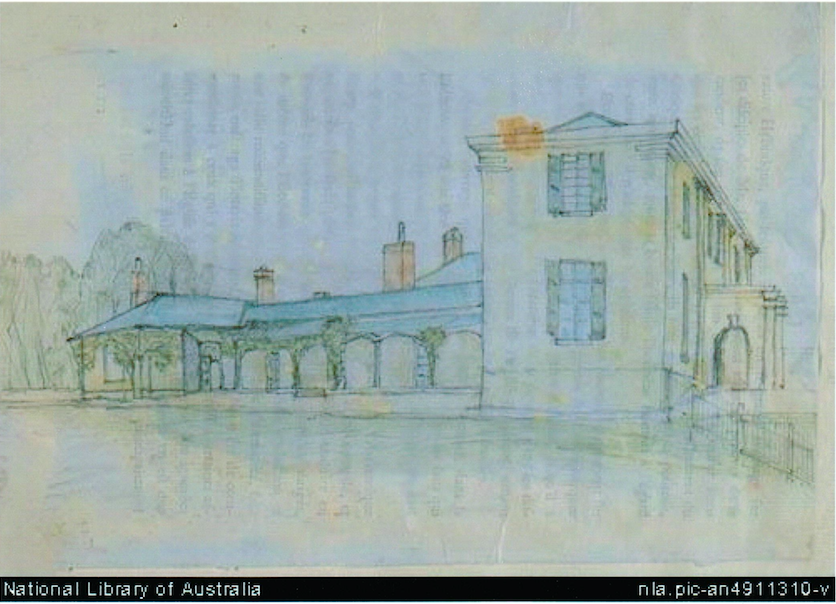
Notes
Examiner Newspaper – 30/9/1846
COLLEGE – Those proceeding to the opening of the College at Bishopsbourne tomorrow will find the best and nearest road by the punt, as the road access on both sides of the Norfolk Plains bridge is desperate. The best line is then from Longford by Messrs Lambert’s and Kain’s farms which has recently been repaired
Examiner Newspaper – 3/10/1846
The Opening of Christ’s College.
On Thursday, 1st. October, the College at Bishopsbourne was opened. There were about 100 persons present and the ceremonies performed were interesting to all who delight in anticipations of the future importance of this institution.
………………..at 11o’clock morning prayers were read …………..
A procession was then formed to proceed to the laying of the foundation stone of the new building in the following order, two and two.
The Archdeacon and clergy present (we believe six but neither of the Launceston ministers were there).
The Rural Dean and the College Trustees.
The Warden, fellows, scholars and other students of the College, amounting we believe, to about 25.
While they laid the stone, Ps CXV111 was read.
An excellent collation was prepared to which the visitors did ample justice; next to this principle attraction was the library which contained some 3,000 volumes.
The pupils walked in their gowns and caps, the College costume, suggestive of school remisciencis of a pleasing and hopeful character.
Written by Ivan Badcock, 7 November 2004

